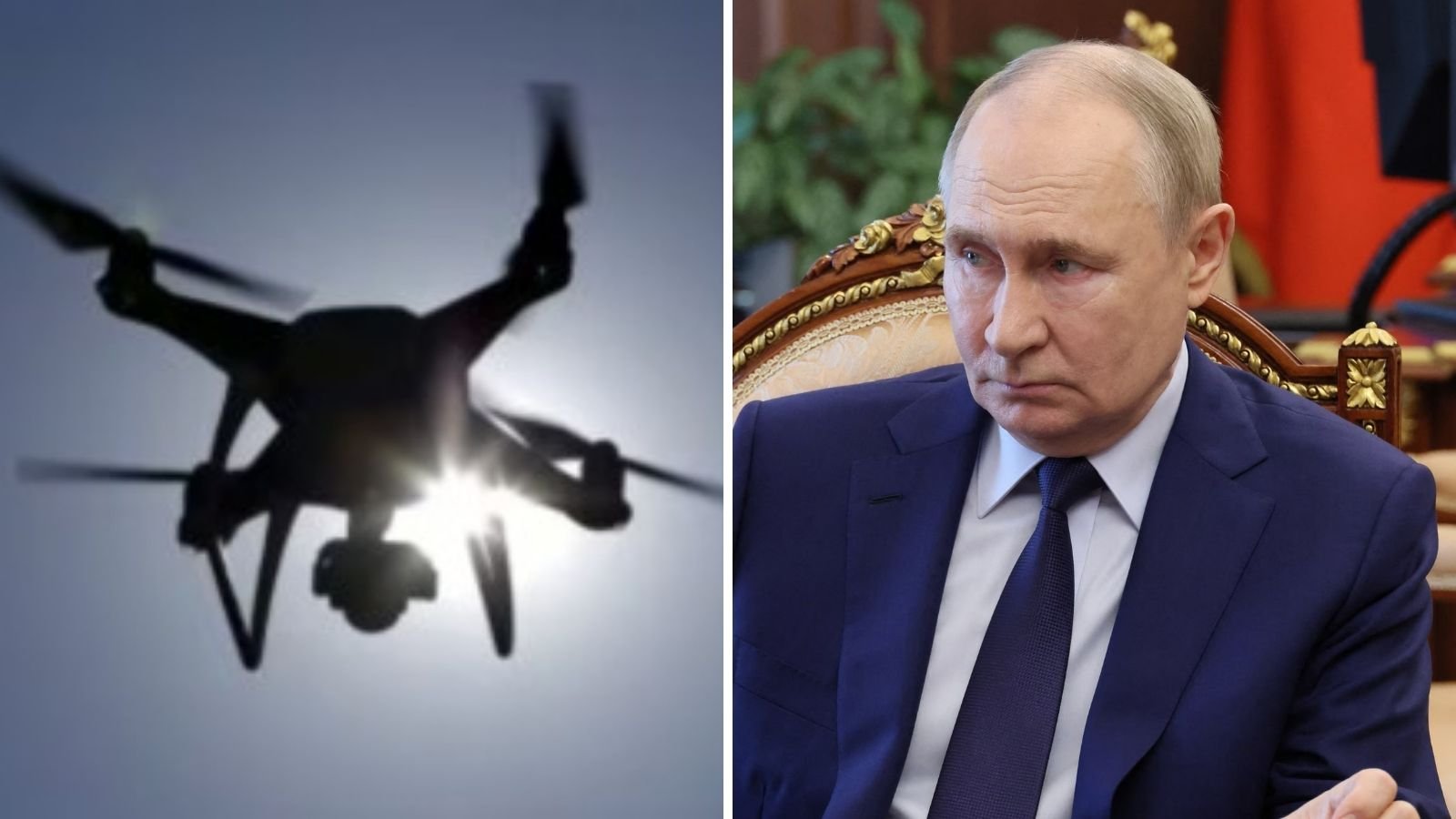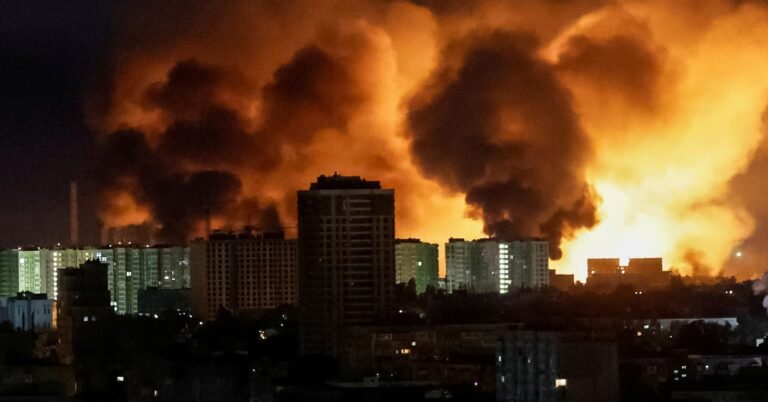In the week since NATO fighter jets were ordered to shoot down several Russian drones that had crossed the alliance’s airspace in Poland, U.S. and Western intelligence officials have been unable to determine whether the raid was accidental or an intentional act by Russia to probe Western air defenses and assess NATO’s response.
Officials warned that either way, the episode still represents a worrying sign that the Kremlin’s willingness to provoke NATO, perhaps with the risk of escalating the conflict, has grown.
“That doesn’t mean it’s not dangerous,” a senior Western intelligence official said. “Without a doubt, something has changed in the way the Kremlin considers its risk tolerance by attacking.”
But the information collected about the drones themselves (their flight pattern and technical specifications) has been contradictory and difficult to interpret.
Ukraine and Poland have publicly declared their conviction that the raid was deliberate, an assessment shared by several European nations.
However, in talks with a dozen senior U.S. and Western military, intelligence, diplomats, and congressional officials, it became clear that there is no consensus view across the NATO alliance.
A senior U.S. military official in the region estimated that the odds of Russia intentionally entering NATO airspace are “50-50.”
Without clear information from Russia — one of the most difficult targets in the intelligence community — it is almost impossible to judge the case with high caution, according to outside analysts.
This puts NATO in the awkward position of determining how to respond to an unprecedented incident without having a clear idea of Russia’s intentions.
“We just don’t have enough information in one sense or another,” another U.S. source familiar with intelligence said.
Although the senior Western intelligence official said the drone’s flight pattern suggested they were lost and that they were trying to recover a GPS signal — suggesting that they had simply been diverted from their course by Ukrainian interference — other indicators could be interpreted in any way.
The fact that many of the Russian aircraft were unarmed drills could indicate that Russia wanted to probe Polish air defenses without risking casualties.
But many of the drones Russia sends to Ukraine in any attack are drills, designed to outwit and weaken Ukrainian air defenses, experts say. This could also be a coincidence.
And the large number of drones that were directed towards Poland is not decisive, according to other senior officials and external analysts, since drones are usually programmed en masse and, in attacks of this magnitude, it is logical that 19 or 20 meet the Ukrainian electronic war defenses and respond identically.
In recent weeks alone, there have been at least four salvos from Russia to Ukraine that involved more than 400 shells in the air simultaneously, the senior Western intelligence official said.
In private, some officials have formed an opinion. The senior Western intelligence official told CNN that they were inclined to consider the incident involuntary, though they condemned it as a worrying sign that the Kremlin has become more reckless. The American source familiar with intelligence agreed.
However, another U.S. military official and a congressional employee familiar with intelligence said it appeared intentional.
Members of the Ukrainian government contacted by CNN acknowledged that Kyiv deploys electronic warfare and interference during Russian air strikes, which can cause enemy drones to deviate from their scheduled route.
Another Russian drone deflected into Romania earlier this week. However, a senior official added that he had “never witnessed such great deviations” in more than three years of war.
This is the balance. Are we ruling out or do we think this is a significant escalation, in the sense that Russia is now directly testing the air defenses of its potential adversaries?” asked Samuel Bendett, a Russian military technology expert.

Ukrainians fear military support could be diverted to NATO members
Although Ukrainian authorities initially hoped that the Russian drone incident would provoke a forceful response from its Western allies, Kyiv has stressed that the priority should be increasing air defense and ammunition systems in the country.
Ukraine has called for more U.S.-made Patriot systems, and some authorities now fear the material could be redirected to NATO allies at its border.
If the raid was intentional, according to the intelligence-familiar Congressional official, it was probably designed for several purposes: to probe Western defenses and assess reaction time, to better understand NATO’s response, to map the routes used by the West to send weapons to Ukraine, to identify future targets, and, of course, to antagonize the West.
Russia could expect the threat of civilian casualties in a NATO country to generate cracks in public support for the war in Ukraine, the senior Western intelligence official said.
But even if it was not intentional, according to the senior Western intelligence official, the episode suggests that Russia is more willing to risk an accidental attack on NATO, whether for a careless selection of targets, inadequate electronic defenses, or any other cause.
This increases the risk of a dangerous miscalculation that could lead to direct conflict.
“Whether intentional or not, it’s absolutely reckless, it’s absolutely dangerous,” NATO Secretary Mark Rutte said over the weekend, though he warned the assessment was ongoing.
But part of what makes Russia’s intentions analysis so difficult is that Moscow often performs provocative actions under a cloudy mantle of plausible denial.
In fact, the episode could have been designed to appear unintentional, several officials and outside experts said. Russian forces have only stated that there are no plans to attack facilities on Polish territory.
Bendett, a Russian expert on unmanned aerial vehicles (UAVs), has pointed out that Moscow’s armed drones have military-grade antennas and sensors that could overcome Ukrainian electronic warfare tactics, while testing that flew to Poland, with GPS and other cheaper sensors, did not succeed.
Poland claimed that Belarus, from whose territory the aircraft were launched, also sent a warning that off-road drones were heading into its airspace.
Both explain why a senior Western intelligence official says he thinks the episode was an accident.
“Normally, if the Russians plan something like that, they don’t talk about it,” this person said.
But of course, those two data could also have been part of an elaborate smokescreen. Russia could have been looking for “a way of looking at what happens from an easy way to reverse, dismiss and for everyone to say ‘This was not an intentional attack,’” Bendett said, an “intentional forcing to make it seem unintentional.”
“These are the logical and intellectual questions we all deal with,” he said. “Many in NATO and Eastern Europe claim that this was probably intentional, precisely because we would all say, ‘Well, did an attack of 800 drones and 20 deviate from its course? Yes, that’s an acceptable margin of error in an attack of such magnitude.”














